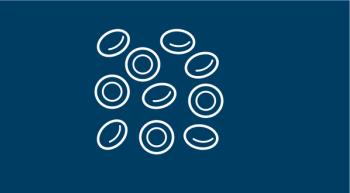
More Than JAK Inhibitors Are Needed to Treat Patients with Myelofibrosis
JAK inhibitors have been the standard of care for patients with myelofibrosis, but now patients need novel agents to help.
While JAK inhibitors have become a staple in treatment for select patients with polycythemia vera (PV) and myelofibrosis, further clinical trial efforts are needed for when patients fail on or are intolerant of this class of agents, explained Raajit K. Rampal, MD, PhD.
“There are a number of really interesting trials ongoing right now,” said Rampal, a hematologic oncologist at Memorial Sloan Kettering Cancer. “The landscape will eventually tell us which one is the most promising agent.”
One novel agent of interest in PV and essential thrombocythemia (ET) is the MDM2 antagonist idasanutlin (RG7388), which recently showed activity in a small investigator-initiated phase II trial. Data showed that the agent was well tolerated, and the overall response rate after 6 cycles was 58% (7/12) with idasanutlin monotherapy and 50% (2/4) with the combination of idasanutlin and low-dose pegylated interferon-α2a.
In myelofibrosis, the
In an interview with OncLive®, a sister publication Oncology Nursing News®, Rampal discussed current available treatments for patients with PV and myelofibrosis, as well as the unmet needs in this area of research.
OncLive: What therapies are currently available for patients with PV or myelofibrosis?
Rampal: With polycythemia vera, the first question is, "Does the patient need treatment in the form of pharmacological treatment?" If they do, we have several options, including hydroxyurea or interferon. It is dependent on a number of factors, and the data seem to suggest that both treatments are reasonable.
There are emerging data for a new version of interferon called ropeginterferon, which may potentially be superior to hydroxyurea in first-line treatment. Beyond that, for patients who fail hydroxyurea, there is a JAK1/2 inhibitor called ruxolitinib (Jakafi). [Ruxolitinib] has shown some really sustainable results over the last 5 years or so.
Once we move beyond that, we get into the realm of investigational therapies. There are several concepts that are ongoing and under investigation. When it comes to myelofibrosis, the landscape is a bit more defined. Ruxolitinib was the first JAK inhibitor approved for patients with symptomatic disease or a large spleen.
However, the landscape has recently changed with the approval of fedratinib (Inrebic), which is a JAK2 inhibitor that can be used in the first- or second-line setting. That being said, if patients fail ruxolitinib, fedratinib is an option for them. Once we get beyond the JAK inhibitors, however, we have a really large unmet need—and for that, clinical trials are the mainstay.
What other advances have been reported in myeloproliferative neoplasms?
With regards to PV, there was a paper published earlier in 2019 on a drug called idasanutlin, which is an MDM2 inhibitor; there is preclinical rationale why targeting this particular protein is important. The data seem to suggest efficacy [with this agent] in a very small number of patients who were studied. That opens the door for further exploration of that idea.
Regarding myelofibrosis, the approval of fedratinib was the biggest thing to emerge [in 2019 in this space] . That being said, there are a lot of interesting compounds currently in clinical investigation and it remains to be seen whether anything promising emerges from those [trials].
Could you share more insight on the unmet needs of this patient population?
The unmet needs are substantial. Patients who fail JAK inhibitors have a very large unmet need in the sense that we don't have many therapies beyond ruxolitinib or fedratinib that are approved. That's important because we know, with ruxolitinib, that about half of patients have failed therapy between 1.5 and 3 years [after being on therapy]. If we look at the treatment failures in patients with PV, with all of the drugs, we see that over time, patients' response rates might decrease. It is important to always consider clinical trials as an option for these patients.
This article originally appeared on OncLive® as, “
Reference
Mascarenhas J, Lu M, Kosiorek H, et al. Oral idasanutlin in patients with polycythemia vera. Blood. 2019;134(6):525-533. doi: 10.1182/blood.2018893545.
Newsletter
Knowledge is power. Don’t miss the most recent breakthroughs in cancer care.
















































































